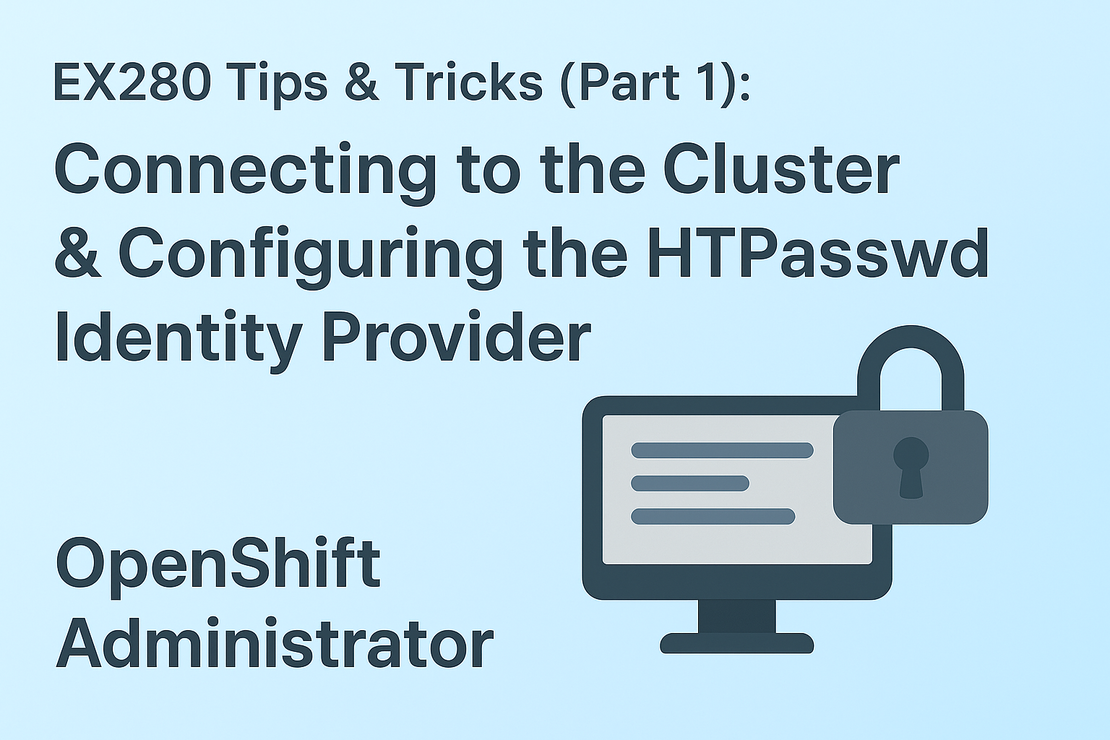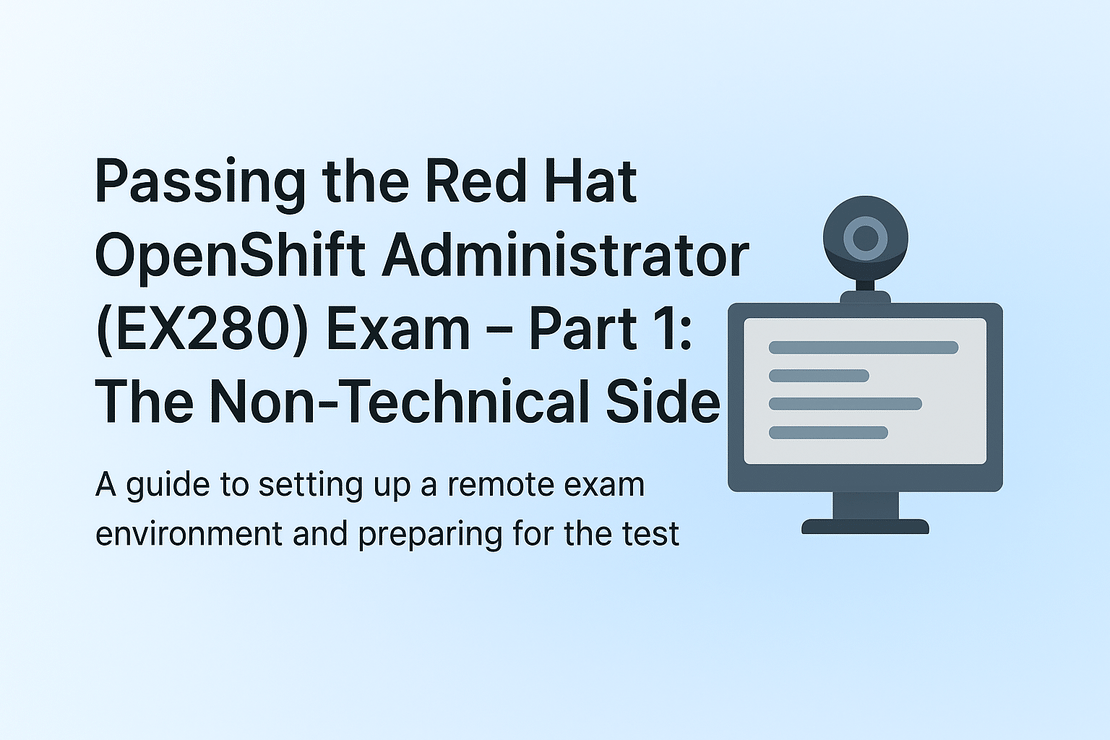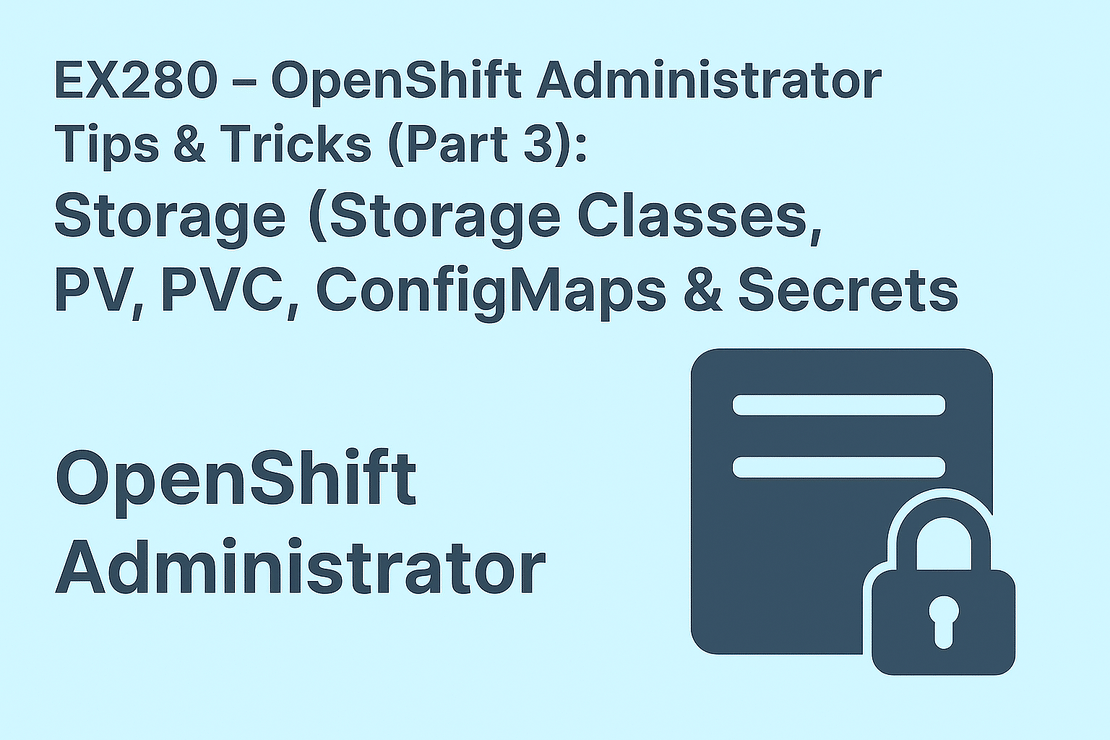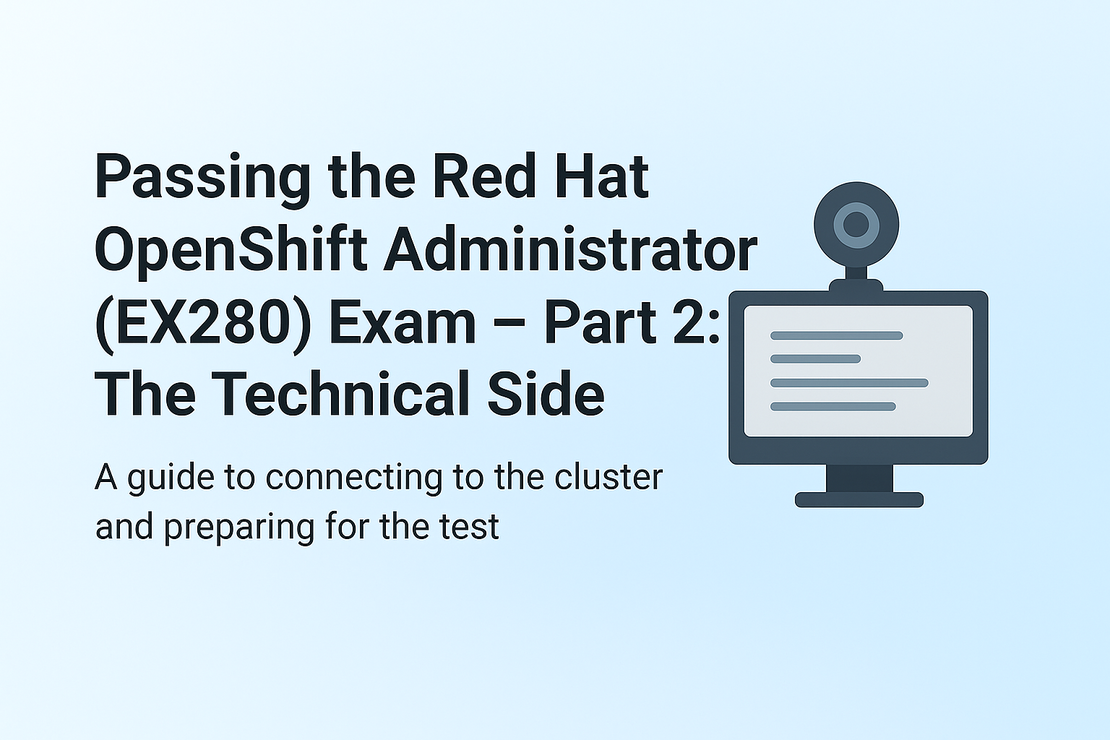
EX280 – OpenShift Administrator Tips & Tricks (Part 1): Connecting to the Cluster and Configuring the HTPasswd Identity Provider
- tharun-vempati
- Certifications , Dev ops , Red hat , Open shift , Administrator
- November 3, 2025
Table of Contents
Welcome to the first part of my EX280 – OpenShift Administrator Tips & Tricks mini-series!
In this series, I’ll share short, focused posts that help you sharpen your OpenShift administration skills — the kind of real-world tips that make both the EX280 exam and your day-to-day cluster work smoother.
The goal of this article is to help you complete both of these tasks — connecting to the cluster and configuring the HTPasswd identity provider — in under 20 minutes. If you can achieve that, you’ve already won half the battle. Mastering these fundamentals early will save valuable time during the exam and allow you to focus on more complex tasks with confidence.
This efficiency only comes with consistent practice. Perform the HTPasswd configuration multiple times until it feels second nature. In fact, I strongly recommend revisiting and practicing this specific task on the morning of your exam — it’s one of those setups that rewards muscle memory and precision.
🌐 Connecting to the Cluster - understanding the environment instructions
Before configuring anything in OpenShift, make sure you can reliably connect to your cluster — it’s the foundation of every administrative task.
Whether you’re using the web console or the oc CLI, always start by ensuring your session and context are correct.
🔗 Connecting to the Remote Workstation
When you begin your EX280 exam, the OpenShift cluster is not directly accessible from your host machine.
Instead, access is provided through a remote workstation server as described in the exam instructions.
To connect successfully, you’ll need the following details:
- Remote workstation hostname
- Workstation username
- Workstation password
Typically, both the hostname and username are clearly listed in the exam environment details.
The password, however, can sometimes be a point of confusion — in most cases, either:
- A specific password will be mentioned directly in the instructions, or
- You’ll be asked to use a generic password provided elsewhere in the exam documentation.
Read these instructions carefully to avoid login issues — this is a common early pitfall for first-time candidates.
Once you have all the necessary credentials, connect to the workstation using SSH:
ssh username@workstation-hostname
🌐 Connecting to Your Cluster
After successfully connecting to your remote workstation, the next step is to access your OpenShift cluster.
To do this, you’ll need valid cluster login credentials — specifically a username and password.
In most EX280 exam environments:
- The username is typically
kubeadmin. - The password is provided within the exam instructions. Sometimes it’s displayed directly, and other times it may be stored in a text file on the remote workstation.
If the password is stored in a file, you can view it using:
cat <filename>
Once you have your credentials, connect to your cluster with the following command:
oc login -u kubeadmin -p <password>
The run
oc login whoami --show-console
command and access the console and start attempting the tasks
flowchart TD
A[Start Exam] --> B[Locate Exam Instructions]
B --> C[Identify Remote Workstation Details - Hostname, Username, Password]
C --> D[Connect to Remote Workstation using SSH]
D --> E[Access Cluster Credentials - Username kubeadmin, Password from instructions or file]
E --> F[Connect to OpenShift Cluster using: oc login -u kubeadmin -p PASSWORD]
F --> G[Successful Cluster Login]
G --> H[Begin Administrative Tasks]
🔐 Configuring the HTPasswd Identity Provider
One of the first tasks every OpenShift admin should master is setting up an HTPasswd identity provider — a lightweight, file-based authentication system that’s both exam-relevant and practical in test environments. It can be configured easily by following the 3 simple steps below:
🧩 Step 1: Create the HTPasswd File
Use the htpasswd command to create a new user file. The -B flag ensures secure bcrypt encryption (required in modern OpenShift versions).
htpasswd -c -B -b users.htpasswd admin redhat123 # Comaand with -c flag to create the file
htpasswd -B -b users.htpasswd user user123 # Command to update the previously creared file
🧩 Step 2: Create the Secret
Store this file as a secret in the openshift-config namespace so OpenShift can access it.
oc create secret generic htpass-secret --from-file=htpasswd=users.htpasswd -n openshift-config
🧩 Step 3: Edit the OAuth Configuration
Now, integrate your secret into the cluster’s OAuth configuration.
oc edit oauth cluster (CLI)
Console:
Administration->Cluster Settings->Configuration->Oauth
Identity pvoviders->Add->HTPasswd
- htpasswd:
fileData:
name: htpass-secret
mappingMethod: claim
name: Ex280-htpasswd
type: HTPasswd
🧩 Step 4: Verify the Login
Once configured, you can test authentication:
watch oc get pods -n openshift-authentication
Once the pods get restarted , logic with the created users with respective passwords
💡 Real-World Tips
- Always backup your
htpasswdfile and keep it versioned. - Avoid overwriting an existing secret — use
oc get secret -n openshift-configto check first. - After configuration, test login both via CLI and web console.
- In real environments, prefer centralized authentication (LDAP, SSO) — but
htpasswdis perfect for labs and exams.
🚀 Wrap-Up
That’s it for Part 1 of this mini-series! You now know how to connect confidently to your cluster and configure one of the most essential authentication mechanisms — the HTPasswd provider.
In Part 2, we’ll explore Network Policies — understanding, creating, and debugging them effectively.
Stay tuned, and happy administering! 🎓


